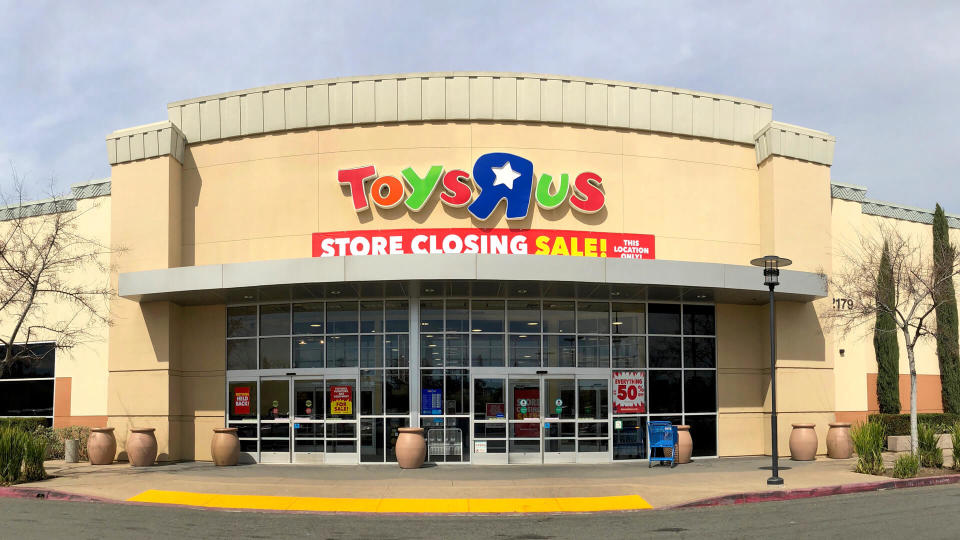5 Big Companies That Suddenly Went Out of Business & Why

Watching a company expand and rise to the top of the food chain within its sector is fascinating. But perhaps more fascinating is when these mega companies — that can access the best of everything — fail.
Trending Now: The 50 Happiest States in America and How Much It Costs to Live There
Try This: How To Get $340 Per Year in Cash Back on Gas and Other Things You Already Buy
Such downfalls are particularly interesting when they happen seemingly out of nowhere. Let’s look at five big companies that suddenly went out of business, and explore why they tanked so abruptly.
Blockbuster
Some of us nostalgic for the good old days miss seeing Blockbuster in town. It was a staple in American communities for decades and emits a strong essence of childhood for Gen X and millennials. It formed in 1985 and within two decades had expanded to comprise 9,000 locations that rented out VHS tapes, DVDs and video games.
That all came to an end in 2013, when Blockbuster practically went extinct (sans a few franchise locations). Experts opine that there was a cluster of factors that contributed to the mega chain’s failure, including poor decisions on behalf of leadership and an underestimation of the formidable force of streaming services.
It was indeed the rise of streaming, Netflix in particular, that was the straw that broke Blockbuster’s back and plunged it into debt from which it would never bounce back.
Find Out: Here’s How Much the Definition of Rich Has Changed in Every State
RadioShack
Another mega company that can rouse up serious nostalgia for people who grew up buying all their electronics locally and in-store is RadioShack. The once tech sector giant, founded in 1921, was on top of the world for a number of decades. Like Blockbuster, though, RadioShack just didn’t keep up with the times.
In 2015, the company filed for bankruptcy due to declining sales, the rise of e-commerce and mounting competition from bigger retailers like Walmart and Best Buy. It was a relatively quick death from there. Despite solid efforts to save the business, RadioShack was forced to shutter its stores in 2017 or convert them to Sprint-only locations.
But was 2017 really the end of RadioShack? There’s been murmurings, as well as shouts, that the now old-timey seeming electronics retailer is making a resurgence under new ownership.
American Apparel
If you spent any time at all cognizant of advertising in the ’90s or early aughts, you surely remember American Apparel. The business, which peaked with more than 250 stores worldwide and reported annual revenue of approximately $630 million, went bye-bye in 2015.
American Apparel swiftly fell from grace, and then out of the picture entirely, because of its founder. Allegations of sexual misconduct swirled around him and in 2014, the board ousted him. Then came bankruptcy in 2015 followed by the closing of more than 100 stores worldwide in 2017. Gildan, a Canadian apparel retailer, bought the remains of the company for $88 million the same year.
Payless ShoeSource
The famed discount shoe retailer was a popular spot for shoppers on a frugal budget, but the momentum eventually died down to the point where the company couldn’t catch its footing. After more than 50 years in business, the brand failed primarily because it just couldn’t keep up with the overbearing competition, chiefly Amazon.
Though Payless ShoeSource is no longer in existence, a new iteration of the brand was born in 2020 (it now goes by simply Payless). Upon its relaunch, CEO Jared Margolis said in a press release, “Our goal is to open 300-500 free standing stores across North America over the next five years, beginning with the launch of the first prototype store in Miami, FL, the new home and headquarters for the brand.”
Toys “R” Us
The swift collapse of Toys “R” Us broke many hearts, particularly among those who grew up racing around its glorious aisles that teemed with so many gems for kids. The company grew from one shop in Washington, D.C (it opened in 1948) to the biggest toy retailer in the nation, with over 1,400 stores at its height in the ’90s.
The company’s legacy came to an end in 2018, when it closed all its stores after filing for bankruptcy. And yet, as we see with other companies on this list, Toys “R” Us didn’t exactly go extinct.
In 2021, WHP Global opened a Toys “R” Us in the American Dream mall in New Jersey. The following year, 452 in-store Toys “R” Us shops opened in select Macy’s locations, with some spanning 10,000 square feet.
Though no big company is completely resistant to failure, particularly not as the decades go by and technology evolves along with consumer behavior, these mega retailers have a knack for being reborn to better fit in the ever-expanding landscape of shopping.
More From GOBankingRates
I Earn Over $30K a Week in Semi-Passive Income on Amazon - Here's How
This is One of the Best Ways to Boost Your Retirement Savings in 2024
This article originally appeared on GOBankingRates.com: 5 Big Companies That Suddenly Went Out of Business & Why

 Yahoo Finance
Yahoo Finance 